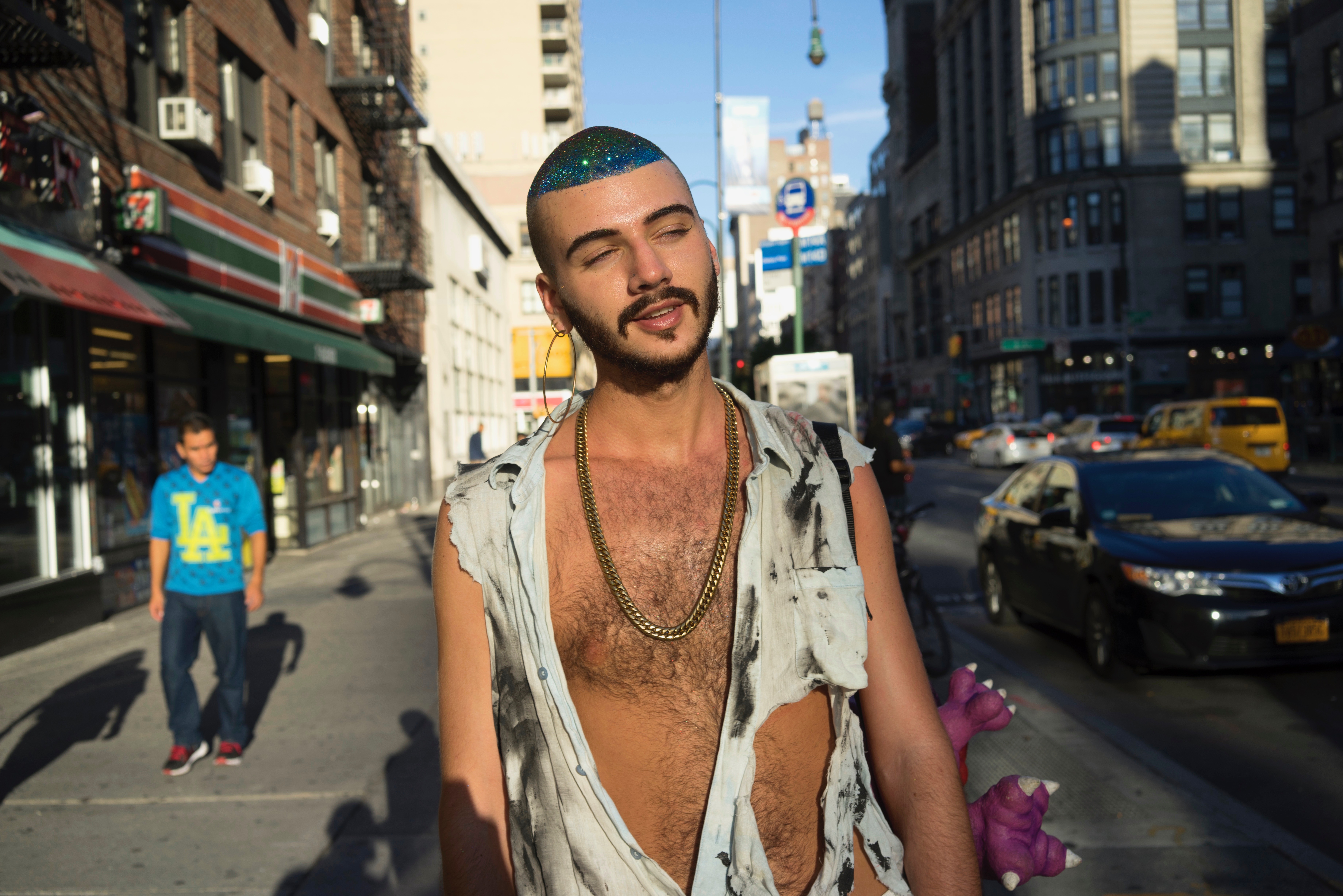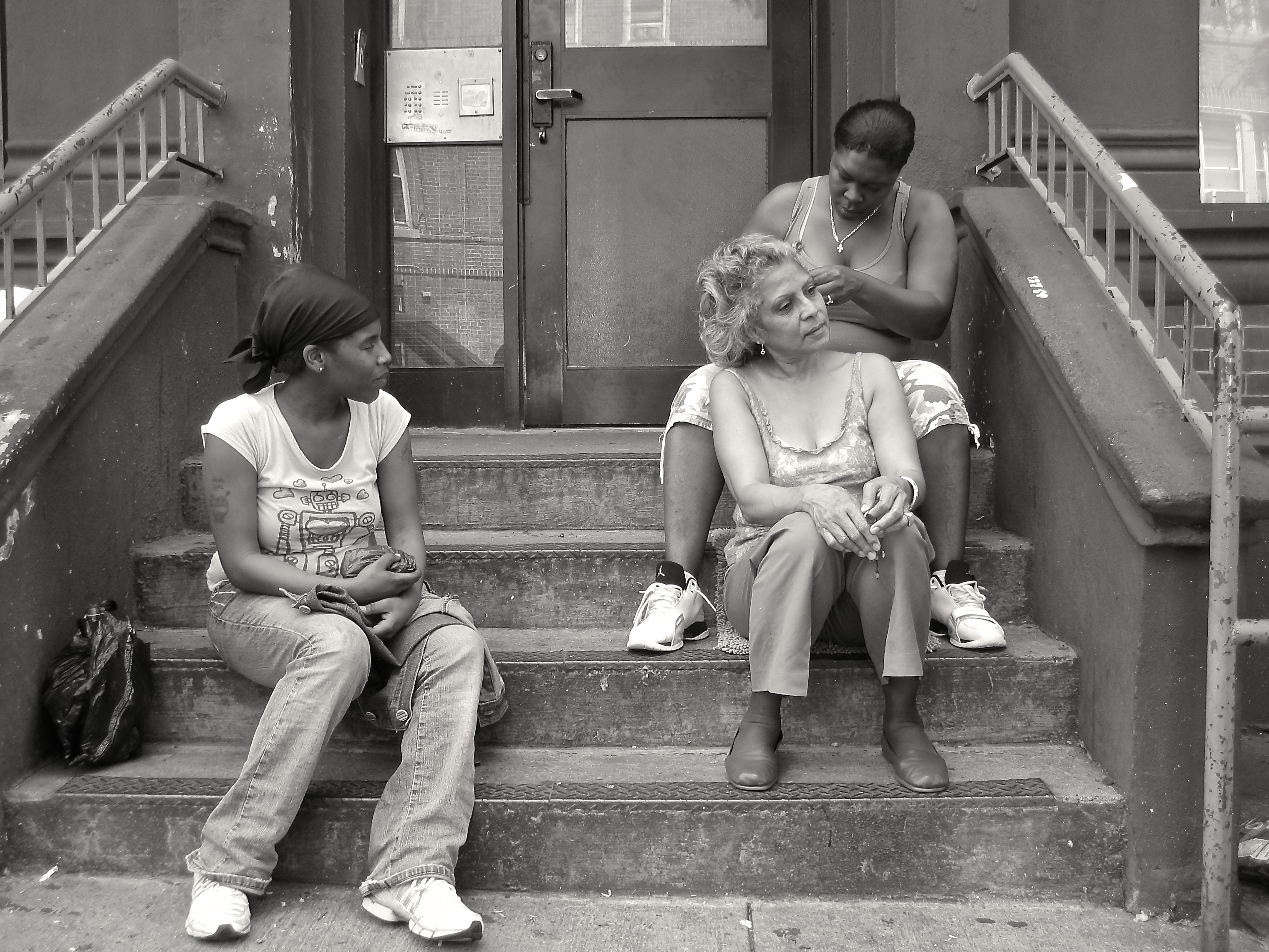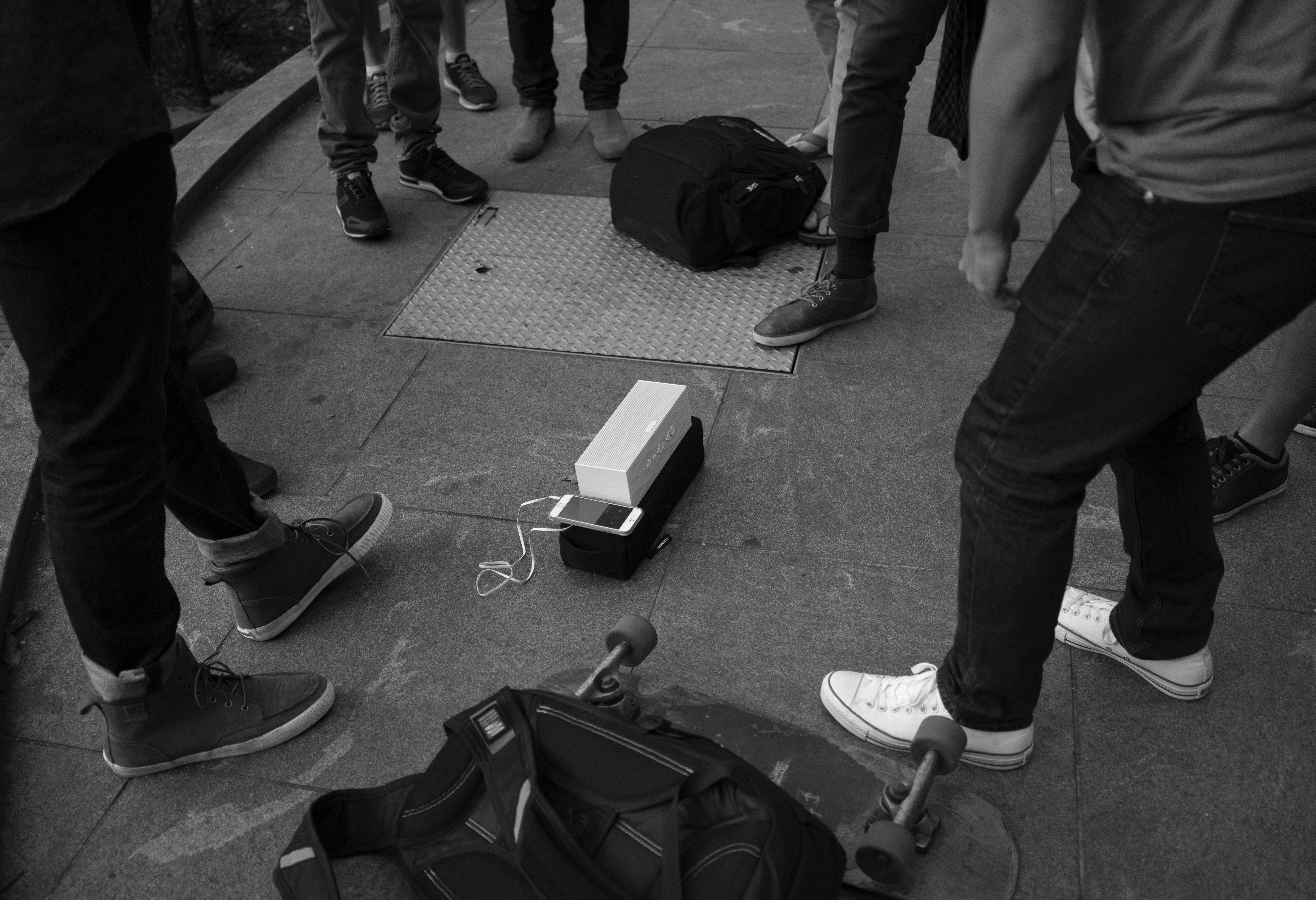Bill Hayes’s photos are a love letter to New York
 Bill Hayes moved to New York from San Francisco in 2009 after the sudden death of his partner of 16 years. His coastal switch triggered a different kind of love affair—one with this dirty, complicated, beautiful city. The writer and photographer was traipsing between boroughs and out of subway cars in search of something that wasn’t the pain of old heartbreak. All he had was his camera.
Bill Hayes moved to New York from San Francisco in 2009 after the sudden death of his partner of 16 years. His coastal switch triggered a different kind of love affair—one with this dirty, complicated, beautiful city. The writer and photographer was traipsing between boroughs and out of subway cars in search of something that wasn’t the pain of old heartbreak. All he had was his camera.
His new photography book, How New York Breaks Your Heart, pieces together a visual history of Hayes’s chance meetings and unlikely connections. The individual moments recount the story of his life in the city through images of perfect strangers. Over the years, Hayes healed, found new love in neurologist Oliver Sacks, and lost it all over again. (Sacks passed away in 2015 after a struggle with cancer). His photos work doubly, evoking this bittersweetness and grasping at the dense inner lives of his subjects, though we’ll never get a chance to know them.
Going through some of the images, Hayes lets us in on what he does know about the New Yorkers he happened across and shares what makes their stories meaningful to him.
HAYES: I love this photo, I love everything it captures (above). It’s the height of summer in Manhattan and I’m walking down 14th street. I wasn’t necessarily going out looking for pictures. I was probably just going to the grocery store or the drug store or something and I see this vision out of a dream walking toward me with a perfectly glitter-covered head. [laughs] He’s just sparkling in the sunlight. I don’t know much about him—I think he worked at a clothing store of some kind—but the glitter accessory was purely his own invention. He didn’t have to do it for a job, he wasn’t going to film something. It was just how he expressed himself, which I think is such a wonderful thing. And I did see him once or twice again and yes, as perfectly glitter-covered, but sometimes in different colors.
HAYES: Those were women in, I think, Washington Heights. That was my first summer in New York, a long time ago, and they were doing exactly what you see. One woman was braiding the other woman’s hair and I approached them. I said, “Can I take your picture?” They looked at me like, “Where did you come from?” [laughs] “I just hopped off the subway.” I stood there and we chatted for a little while, and I just kept taking pictures. But I love how that photo captures them lost in the moment.

HAYES: I feel that you don’t have to photograph someone’s face to get a portrait. This was the summer of 2015, in Washington Square Park. Every Friday night at 6 o’clock this group would meet to do freestyle rapping in what’s called a cypher in hip-hop. What I loved about it was that it’s so diverse, anyone was welcome. You just had to have the guts to do it. Some of them were really, really good with their rhyming and some of them were not that good, or they would flub or start laughing or something, but it didn’t matter. They were just there, on the spot, spontaneously creating their own art, in a certain way, like I create my photographs.

HAYES: You know, I really believe in the concept of chance and serendipity. I was just walking down the street and I see up ahead, in front of me, this man stepping outside at the end of the day to enjoy a cigar, an end-of-the-day cigar. I came up to him right away and said, “Oh, this would be a great picture! Can I take your picture?” And he was game so I shot him through his whole kind of ritual, of snipping off the end of the cigar and lighting it and drawing on it. I took, I don’t know, 12 or 13 pictures but I loved this one in particular—the movement and the pleasure and the whole composition.

HAYES: Sometime in 2014, for about six months, the store Comme des Garçons on 22nd street had a bright, shiny white wall in the front of the store and amazingly it stayed free of graffiti and posters for a long time. It just hit me, as I was walking past it, that it resembled a seamless white backdrop that one would have in a studio. So I decided to use it as sort of my own private studio but on the streets of New York City.
I saw this young man walking down the street, kind of in a dreamy state, and I asked him my question. It turned out he didn’t speak English well. He was from Korea and he was visiting, but holding this very prototypically American gigantic can of soda called Shack Soda. Even though he didn’t understand English well, he understood what I was trying to do. He just stood there and opened up his soda and took a few sips and I kept taking pictures and that’s the picture I got.

HAYES: It’s funny, every picture I can remember the story. I came upon Lois and Phyllis in Jackson Square Park. It was the fall of 2014 and I was immediately drawn to them and I asked them if I could take their picture. They were kind of puzzled, “Why would you want to take our picture?” I remember I tried to get them to look at me, which is to say to look into the lens of the camera, but it wasn’t really working. That sometimes happens with couples or with family. So I just sat there, I was sort of on my haunches, I just sat there and kept taking pictures and talking to the two of them. And as I took pictures, I feel like I captured something about their relationship, and their rapport, and their body language, and I’d learned they’d been together for 30 years as a couple. Although they lived in the West Village, where I live, I’d never seen them before, and I’ve seen them only once or twice since.

HAYES: I have many, many photographs of Oliver [Sacks, Hayes’s late partner] in our apartment but I think this was one of the only ones taken outside. It’s just a very joyful picture to me. This was taken in May 2015. Oliver had been diagnosed with terminal cancer in January and he enjoyed a lovely, albeit brief, period of intermission from cancer. That was his word for it, not remission but intermission. So this was between his diagnosis and, after the surgery, his final decline. He had about a two or three month period where he felt really good and we would go to spots in New York that we both loved. For him, his favorite place in New York was the New York Botanical Garden in the Bronx. We would often, over the years, go there early on a Sunday morning and walk throughout the park. So this was taken there.
Insomniac City is a memoir with photographs, but [How New York Breaks Your Heart] is kind of the inverse. It’s photographs with a handful of sentences or lines and, in a way, telling this story of life after Oliver. Even though many of the pictures were taken when he was still alive, the story it tells is about life after death, or a death.

HAYES: It was August 2015, so the month that Oliver died—before he died. I was taking a walk and I stumbled on this dress and I, to this day, don’t know why it was there or whose it was, but I really like how that ambiguity infuses the photograph. I think it’s both sort of forlorn and very pretty. It’s both bittersweet, somehow, but also optimistic or cheerful. And it’s kind of sad but also kind of romantic. I think that sums up how New York breaks your heart and my approach to the whole book.

HOW NEW YORK BREAKS YOUR HEART IS AVAILABLE NOW. AN EXHIBITION OF ITS PHOTOGRAPHS WILL BE ON VIEW AT STEVEN KASHER GALLERY FROM FEBRUARY 15, 2018 UNTIL MARCH 17, 2018.






